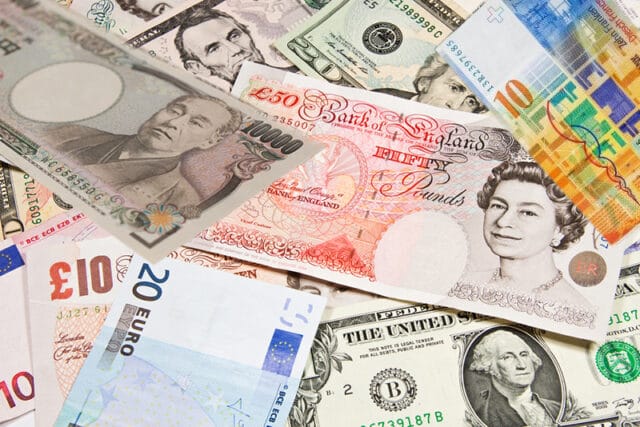The 24-hour FX market is divided into three primary trading sessions: London, the US, and Asia. Each significant geographic market center might have its own set of characteristics and patterns, allowing traders to implement plans efficiently at any moment. When we talk about the European session, we usually mean the London session because London accounts for 36.7% of total trading volume, making it the world’s most significant economic and commercial center and global capital in terms of FX trading.
What time does the market open?
Just before the Asian session hours end, the European session takes over to keep the currency market active. This FX time zone is densely populated, with a number of large financial markets that might serve as symbolic capital.
To date, London has had the privilege of setting the criteria for the European session. London’s official business hours are 7:30 a.m. to 3:30 p.m. GMT. This time is additionally extended owing to the presence of other capital markets (such as Germany and France) before the formal open in the United Kingdom, while the session’s finish is pushed later since volatility remains high until after the closing. As a result, European hours are usually from 7 a.m. to 4 p.m. GMT.
What are the features?
It is one of the most liquid sessions. Major currency pairings can trade at exceptionally low spreads due to the enormous volume of buying and selling. Day traders who want to trade short moves can be interested in knowing trends and breakouts to trade in order to lower their spread costs.
From 8:00 a.m. to 12:00 p.m. ET, the European and American sessions overlap. These are the world’s two major market centers, and huge and rapid movements may be noticed during the four-hour overlap when a large quantity of liquidity enters the market. During this period, the volatility reaches its peak. Traders can utilize a break-out method to trade the overlap, which takes advantage of the greater volatility observed during the overlap.
The European session is fast-paced and full of activity. The slow Tokyo market will lead into the London session, and when prices start to shift from UK-based liquidity sources, traders should expect increased volatility. The average hourly move on several of the main currency pairings will frequently increase when prices begin to come in from London.
The lunch period of the European session is very well-known. Traders and brokers frequently take lunch with their customers between 12 and 2 p.m.; the activity in the market typically slows down. Before opening the New York session at 2 p.m., high-volume trading resumes.
EURUSD
The euro against the dollar is best traded at this session because of high liquidity. Here are the trading strategies during this session.
Breakdown/Breakout strategy: Using a breakout strategy to trade breakouts during the London session is similar to trading breakouts at any other time of day, with the exception that traders may expect a flood of liquidity and volatility at the open. The trader buys the breakout and sells the breakdown in this technique. When the resistance levels break, the payoff occurs, allowing for-profit possibility from low-risk trade entry.
Pullback strategy: the trader can choose to purchase or sell the pullback in this technique in this session because of volatility. The approach identifies resistance levels, which are classified as high, low, or crucial. These levels are then employed to restore the initial trend direction by halting the price swing, which is interpreted using Fibonacci retracements and Moving Averages.
GBPUSD
It is one of the most popular and regularly traded pairs. It is one of the best pairs to trade during this session due to its deep liquidity and high volatility features. We can employ the opening range breakout strategy.
The strategy’s premise is based on a changing volume footprint that aims to catch an early price change after the Asian session. Specifically, following the closing of the New York session and into the Asian session, the volume of pound-dollar trade drops dramatically.
As a result, until the start of the European session, most of the main institutional traders and dealers dealing with the pair will be offline. During the overnight session, this frequently results in range-bound market behavior in the GBPUSD currency pair. As a result, an initial range breakout trade emerges as the pair begins to gather up the volume in the early European session. Because Interbank dealers establish a range on either side of the market at the start of the session, a possible breakout from this range typically results in a trend leg early in the session.
USDJPY
The pair has significant volatility and narrow spreads, making it ideal for trading during this session. The best strategy to employ here is the price action strategy.
A plot showing a pair’s price movement (in this example, the USDJPY) versus a certain time period is known as price action. The USDJPY pair’s price movement has a gradual bullish trend and quick and rapid bearish trend due to its strong price stability and risk sensitivity. Traders use this method to decide whether to buy or sell a pair based on the trend’s movement. Traders place a long trade entry if the trend is positive, and the present data, together with the retest approach, shows that it will continue in that direction.
USDCHF
When trading the pair, a variety of techniques may be used. During European and US trading hours, and especially when major economic statistics are issued, the pair is most liquid. Economic releases such as US non-farm payrolls and unemployment rate, economic mood, manufacturing, and non-manufacturing activity growth, durable goods orders, consumer inflation, retail sales, and other crucial data from Switzerland will, logically, see the most active trading.
Also, you may take advantage of the significant positive correlation between the euro and the Swiss franc. Knowing that the USDCHF and the EURUSD move in such close consonance, there’s a good possibility that when one of the pairings moves, the other will react in like. This offers you a signal as to which way you should enter the market before it moves.
Conclusion
In comparison to its peers, the European session accounts for roughly 35% of the overall average FX volume. There are no best currency pairings to trade during European market hours, although there are currency pairs whose spreads will narrow due to heavy activity, allowing traders to save money on spreads. These pairs include EURUSD, GBPUSD, USDJPY, and USDCHF.




